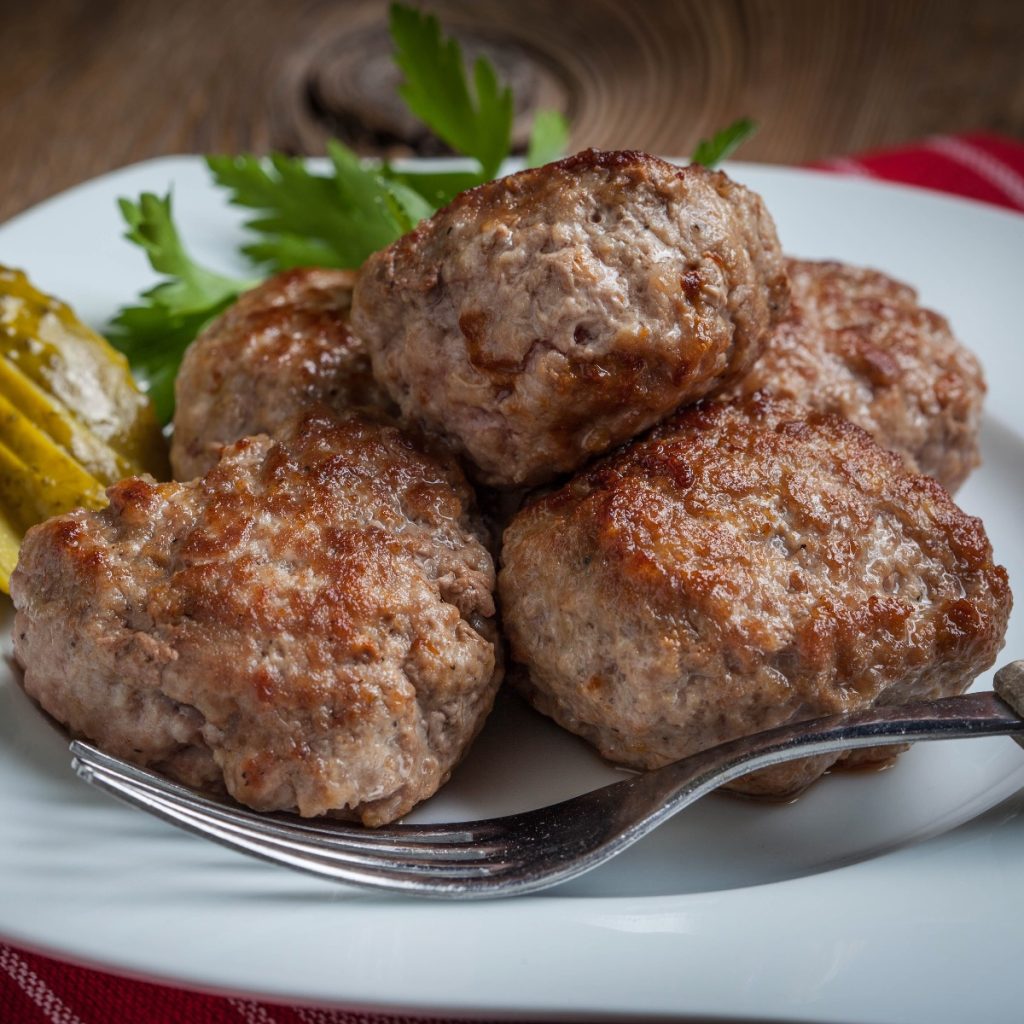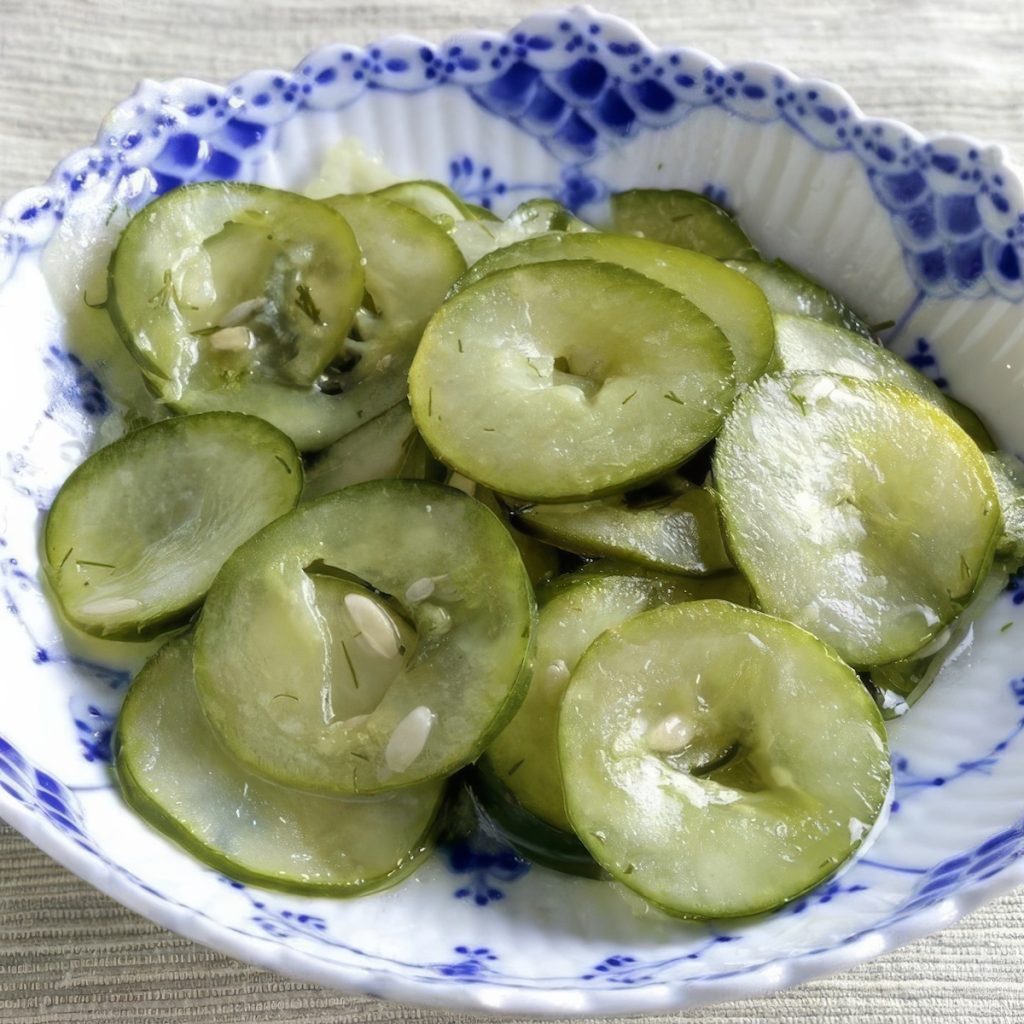Frikadeller A Danish Meatball that Looks Like A Tiny Hamburger
Danish Frikadeller, or pan-fried meatballs, bring back some of my fondest childhood memories. Growing up, my Danish mom would make this comforting dish for us on busy weeknights and cozy Sunday dinners alike.
She always prepared them with care, mixing ground pork and beef with finely grated onions, eggs, milk-soaked breadcrumbs, and just the right blend of salt and pepper.
I can still picture her shaping the mixture into plump, oval patties with practiced hands before frying them to a perfect golden brown in a cast-iron skillet. The aroma would fill the kitchen, drawing us in long before dinner hit the table.
Served with creamy potatoes, tangy red cabbage, or cucumber salad, these Frikadeller always tasted like home. To this day, when I make them, I hear her voice reminding me not to overmix the meat and to watch the heat so they brown evenly without drying out.
This humble dish—so simple, yet so full of heart—is a staple of Danish cooking, and one that connects me to my family’s heritage every time I prepare it. If you’re looking to add a bit of Denmark to your table, I can’t think of a better place to start.
Traditional Danish Gravy
Ingredients
- ¼ cup butter
- ¼ cup all-purpose flour
- 2 cups beef stock or chicken stock
- ½ cup heavy cream
- salt and pepper to taste
Instructions
- After cooking the frikadeller in a frying pan, remove them from the pan and set them aside on a plate lined with paper towels to drain any excess fat.
- Melt the butter in the same pan over medium heat until it bubbles slightly.
- Gradually add the flour to the melted butter, stirring constantly to create a roux. Continue stirring and cooking the roux for a couple of minutes until it turns golden. Be careful not to let it burn.
- Slowly pour in the broth while stirring continuously to avoid lumps. Keep stirring until the mixture thickens and comes to a gentle boil.
- Reduce the heat to low, and add the heavy cream to the gravy. Stir well to combine.
- Simmer the gravy for a few more minutes, allowing it to thicken and develop a rich flavor. Add more broth or cream to achieve your desired consistency if it becomes too thick.
- Season the gravy with salt and pepper to taste. The amount of seasoning will depend on your preference and the broth flavor you use.
- Remove it from the heat once the gravy reaches the desired consistency and flavor.
- Serve the frikadeller on a plate with boiled potatoes and the delicious homemade gravy poured over them.
Notes
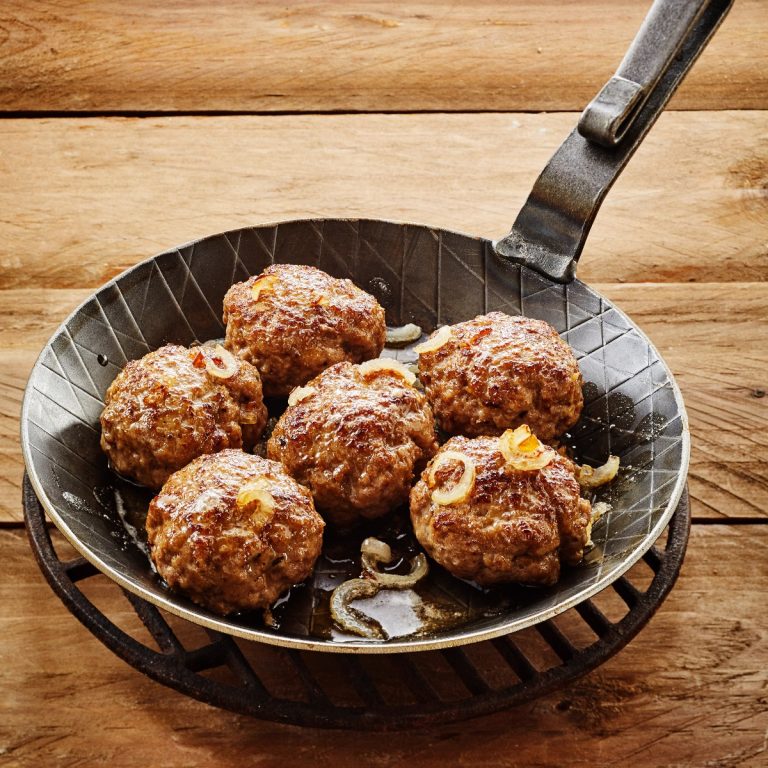
Classic Side Dishes To Serve with Frikadeller
Danish frikadeller are typically served as a main course, traditionally accompanied by various side dishes that complement their savory flavors. Here are some typical dishes that are served with frikadeller:
| Side Dish | Description |
|---|---|
| Creamed Potatoes (Flødekartofler) | Thinly sliced potatoes baked in cream and sometimes cheese, rich and comforting. |
| Arugula Salad with Apples | Peppery arugula tossed with crisp apples, walnuts, and a mustard vinaigrette. |
| Boiled Potatoes (Kartofler) | Simply boiled potatoes, often served with butter and fresh parsley. |
| Braised Kale | Tender braised kale with garlic and a splash of vinegar—earthy and slightly bitter. |
| Cucumber Salad (Agurkesalat) | Thin cucumber slices marinated in vinegar, sugar, and salt for a bright, crisp contrast. |
| Danish Red Cabbage (Rødkål) | Sweet and tangy braised red cabbage with vinegar, sugar, and spices—balances the savory meat. |
| Green Peas (Grønne ærter) | Lightly steamed peas, offering color and freshness to the plate. |
| Light Coleslaw with Yogurt Dressing | Shredded cabbage tossed with a tangy yogurt-based dressing for crunch and brightness. |
| Lingonberry Jam (Tyttebærsyltetøj) | Tart berry jam providing a bright, fruity counterpoint to the rich meatballs. |
| Pickled Beets (Syltede Rødbeder) | Sliced beets pickled in vinegar and sugar, adding a sweet-sour note to the meal. |
| Quinoa & Herb Salad | Light quinoa salad with fresh herbs, cucumber, and lemon vinaigrette. |
| Roasted Root Vegetables | A mix of carrots, parsnips, and celery root roasted with olive oil and herbs—earthy and light. |
| Rye Bread (Rugbrød) | Dense, dark Danish rye bread often served alongside as an earthy complement. |
| Shaved Fennel & Orange Salad | Thin slices of fennel and orange segments with olive oil—a bright and refreshing side. |
| Steamed Asparagus | Simply steamed asparagus with lemon juice and a touch of butter. |
| Warm Potato Salad (Lun Kartoffelsalat) | Potatoes dressed in a light mustard and vinegar dressing, served warm. |
What Is Frikadeller
These delectable meatballs hold a special place in Danish culture and are a beloved comfort food cherished for generations. Their unique flavor and versatility have made them a staple in Danish households and a favorite among locals and visitors.
Frikadeller, pronounced “free-kuh-del-ler,” has a fascinating history that dates back centuries. The word “frikadelle” is believed to have its roots in the German word “Frikadelle,” which refers to a flat, pan-fried meatball.
It is thought that frikadeller was introduced to Denmark by German immigrants during the late Middle Ages, and over time, it has evolved into the beloved Danish version we know today.
History
The exact origins of Danish frikadeller are not entirely clear, as similar meatball dishes have been enjoyed in various cultures for centuries. However, the dish known today in Denmark is believed to have been influenced by German immigrants during the late Middle Ages.
The term “frikadelle” is thought to have its roots in the German word “frikadelle,” which refers to a flat, pan-fried meatball. These German immigrants likely brought their version of the dish to Denmark, where it was embraced and adapted to suit Danish tastes and ingredients.
Over time, Danish frikadeller evolved into a beloved traditional dish, and various regional and family variations emerged. The core ingredients and cooking methods remained consistent, featuring a combination of ground pork or pork and beef mixed with onions, eggs, milk, breadcrumbs, and seasonings, pan-fried until golden brown.
While it’s difficult to pinpoint a specific individual who invented Danish frikadeller, it is undoubtedly a dish that has developed and evolved through cultural influences and passed down through generations. Today, frikadeller are an integral part of Danish cuisine, representing a symbol of comfort, togetherness, and culinary heritage.
A Traditional Danish Frikadeller
The traditional Danish frikadeller recipe consists of a simple but wholesome blend of ground pork or a combination of pork and beef. Minced onions, eggs, milk, breadcrumbs, and a dash of flour are combined with the meat to form a moist and flavorful mixture.
Salt, pepper, and allspice are added to enhance the taste. This combination is lovingly mixed by hand until a consistent texture is achieved, reflecting the essence of traditional Danish cooking—simple yet full of heart.
Once the mixture is ready, it is time to shape the frikadeller into small, flattened meatballs. The size and thickness of these meatballs can vary depending on regional and familial preferences. Traditionally, they are about the size of a golf ball, allowing for even cooking and a crispy exterior.
Cooking Process
The next step is the cooking process, which plays a crucial role in perfecting the taste and texture of these delightful meatballs. Frikadellers are typically pan-fried in butter or oil until they develop a rich, golden-brown crust. This method locks in the flavors and ensures a tender and succulent interior.
They are often served with various accompaniments, making them versatile dishes suitable for various occasions. They are commonly enjoyed as the centerpiece of a hearty weekday meal alongside boiled potatoes, gravy, and a medley of vegetables like pickled red cabbage and carrots.
Additionally, they can be served on rye bread with pickles and remoulade, a tangy Danish sauce that perfectly complements the savory meatballs.
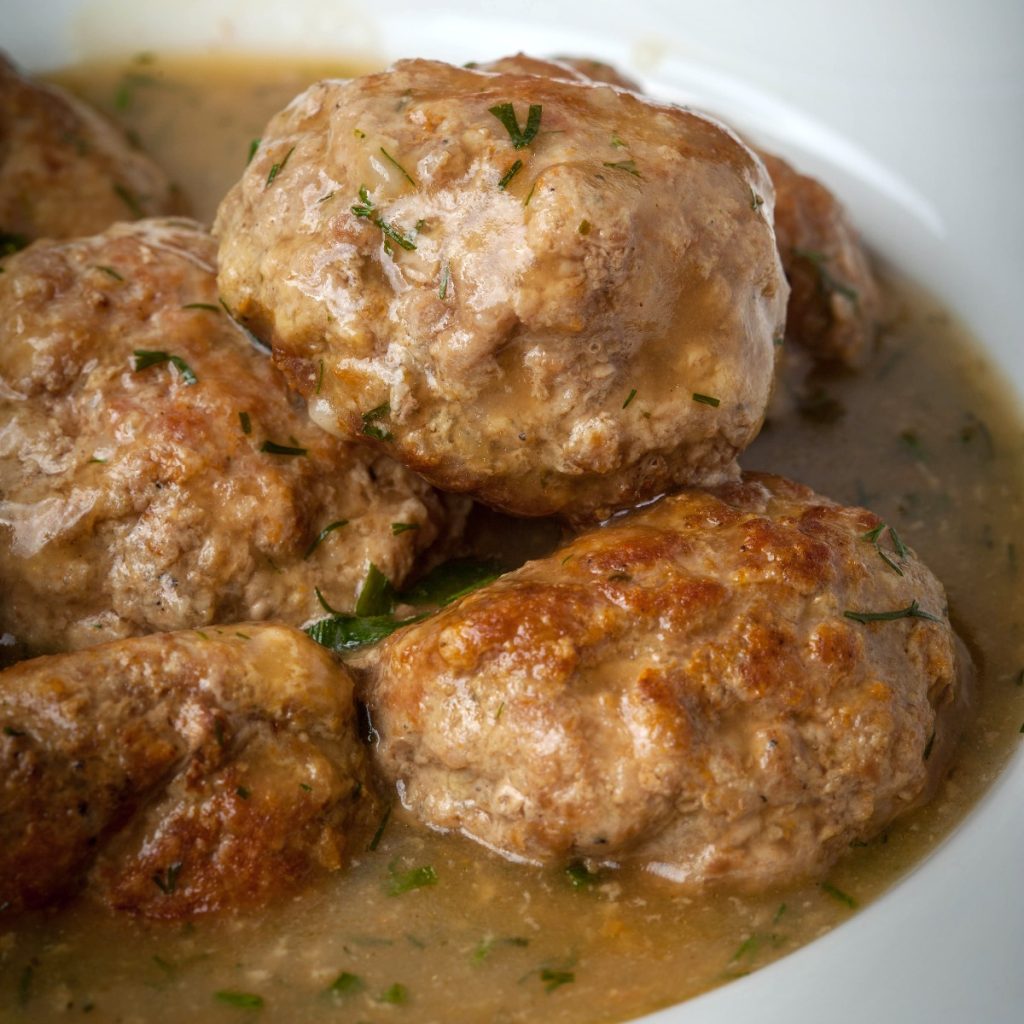
Festive Occasions
One cannot fully appreciate Danish frikadeller without experiencing the convivial atmosphere of a traditional family gathering or a local restaurant. These beloved meatballs symbolize togetherness and celebration, as they often grace the table during festive occasions, including Christmas, Easter, and birthdays.
Beyond their cultural significance and mouthwatering taste, frikadeller also represent the warm hospitality of Danish culture. Guests are always welcomed with a generous serving of these delectable meatballs, showcasing the Danes’ tradition of sharing good food and company.
In recent years, Danish cuisine has gained international acclaim, and the popularity of frikadeller has spread beyond Denmark’s borders. Thanks to the influence of food bloggers, chefs, and culinary enthusiasts, more people are now discovering the simple pleasure of frikadeller and the culinary heritage they embody.
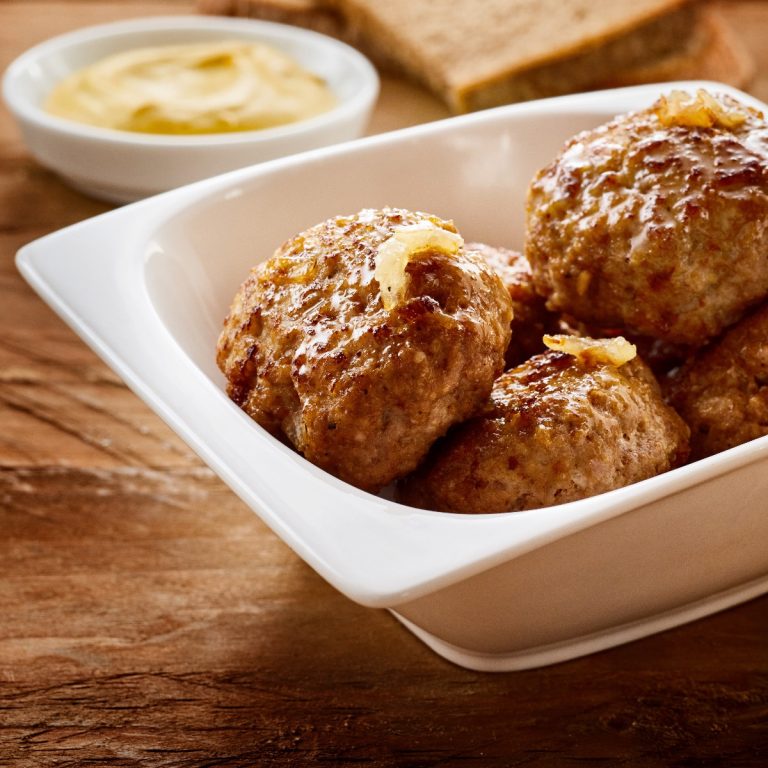
Five Fun Facts About Danish Frikadeller
German Influence: Danish frikadeller have their roots in German cuisine. It was likely introduced to Denmark by German immigrants during the late Middle Ages and has since become an integral part of Danish culinary culture.
Versatility: While commonly made with ground pork, they can also be prepared using a combination of pork and beef or other types of ground meat. Some recipes even incorporate minced fish or poultry for unique variations of this beloved dish.
Traditional Family Recipe: Every Danish family has a special frikadeller recipe passed down through generations. While the core ingredients remain similar, the specific measurements and additional seasonings can vary from one family to another, adding a personal touch to each preparation.
4. Festive Occasions: Frikadeller holds a special place in Danish celebrations and gatherings. They are often served during festive occasions like Christmas, Easter, birthdays, and other family events. This tradition emphasizes sharing good food and joyful moments with loved ones.
Meatball Records: In Denmark, frikadeller are so beloved that there’s even a world record for the largest meatball ever made! In 2013, a Danish supermarket chain created a massive one weighing approximately 436 pounds (around 198 kilograms). This enormous meatball required a specially designed oven for cooking and was later cut into portions for charity purposes.
A Traditional Gravy to Serve with Frikadeller
This is a straightforward recipe for making traditional Danish gravy. I watched my mom make this gravy hundreds of times for frikadeller and other Danish meals she prepared. With butter and heavy cream, how can you go wrong?
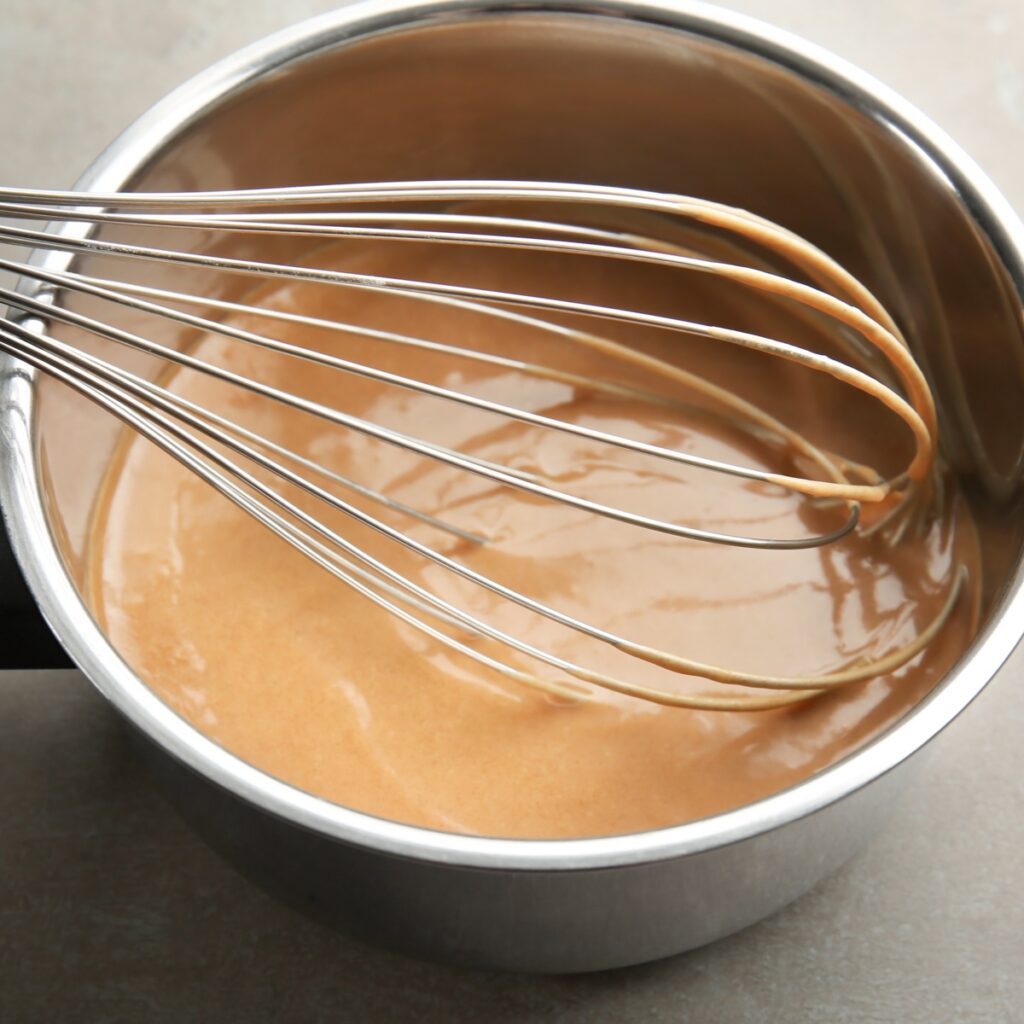
Danish Frikadeller Recipe
Ingredients
- 1 pound ground pork or mixture of pork and beef
- 1 small onion finely minced or grated
- ⅓ cup milk
- ⅓ cup breadcrumbs
- 1 large egg
- 1 tablespoon all-purpose flour
- 1 teaspoon salt
- ½ teaspoon pepper
- ¼ teaspoon ground allspice
Instructions
- Combine the ground pork (or pork and beef mixture) in a large mixing bowl with the finely minced or grated onion.
- Mix the milk and breadcrumbs in a separate bowl, allowing the breadcrumbs to absorb the milk. This will help keep the frikadeller moist and tender.
- Add the milk-soaked breadcrumbs, egg, flour, salt, pepper, and allspice (if using) to the meat and onion mixture. Use your hands to thoroughly mix all the ingredients until you have a cohesive and slightly sticky mixture.
- Cover the bowl with plastic wrap and refrigerate the mixture for at least 30 minutes. Chilling the mixture will make it easier to shape the frikadeller.
- Once the mixture has chilled, take a handful of the meat mixture and form it into small, flattened meatballs. Aim for a size slightly smaller than a golf ball, as the frikadeller will expand slightly while cooking.
- Heat a generous amount of butter or oil in a frying pan over medium heat. You want enough fat to cover the bottom of the pan.
- Place the frikadeller in the pan, leaving space between them for easy flipping. Cook the meatballs on each side for 4-5 minutes until they develop a golden-brown crust and are cooked through. You may need to adjust the heat to ensure they cook evenly without burning.
- Once cooked, transfer the frikadeller to a plate lined with paper towels to absorb any excess oil.
- Danish frikadeller are traditionally served hot as a main course alongside boiled potatoes, gravy, and a selection of vegetables. They can also be served as an appetizer or on rye bread with pickles and remoulade.

